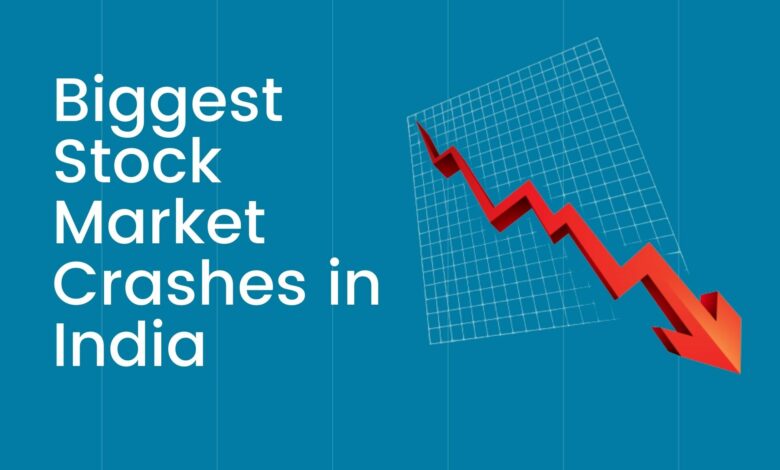
13 Biggest market crashes in the history of India
Stock markets in India, notably in Mumbai (BSE and NSE), have undergone a series of booms and collapses since the creation of the Bombay Stock Exchange. The BSE and NSE, India’s two main Stock Exchanges, have seen crashes and significant downfall. A stock market crash in India is decribed as a “fall in the NIFTY of more than 10% within a span of 20 days” or “difference of more than 10% between the high on one trading day and the low on the next trading day” or “decline in the NIFTY of more than 9% within a span of 5 days” by the Financial Times.
The Bombay stock market and National Stock Exchange has crashed several times in the history, following is the list:
1. The 1865 stock market crash
According to the Business Standard, India’s first stock market crisis took place in the year 1865.
Despite the lack of a Bombay stock market, Gujarati and Parsi businessmen exchanged shares at the intersection of Rampart row and Meadows street quite frequently . Speculation over the outcome of the American Civil War had led to unreasonable gains in the shares of new Indian firms in the previous years. Back Bay reclamation shares (face value Rs. 5,000) reached Rs. 50,000, while Bank of Bombay shares (face value Rs. 500) reached Rs. 2,850. Cotton money was pushed into the stock market, propelling stock prices upward.
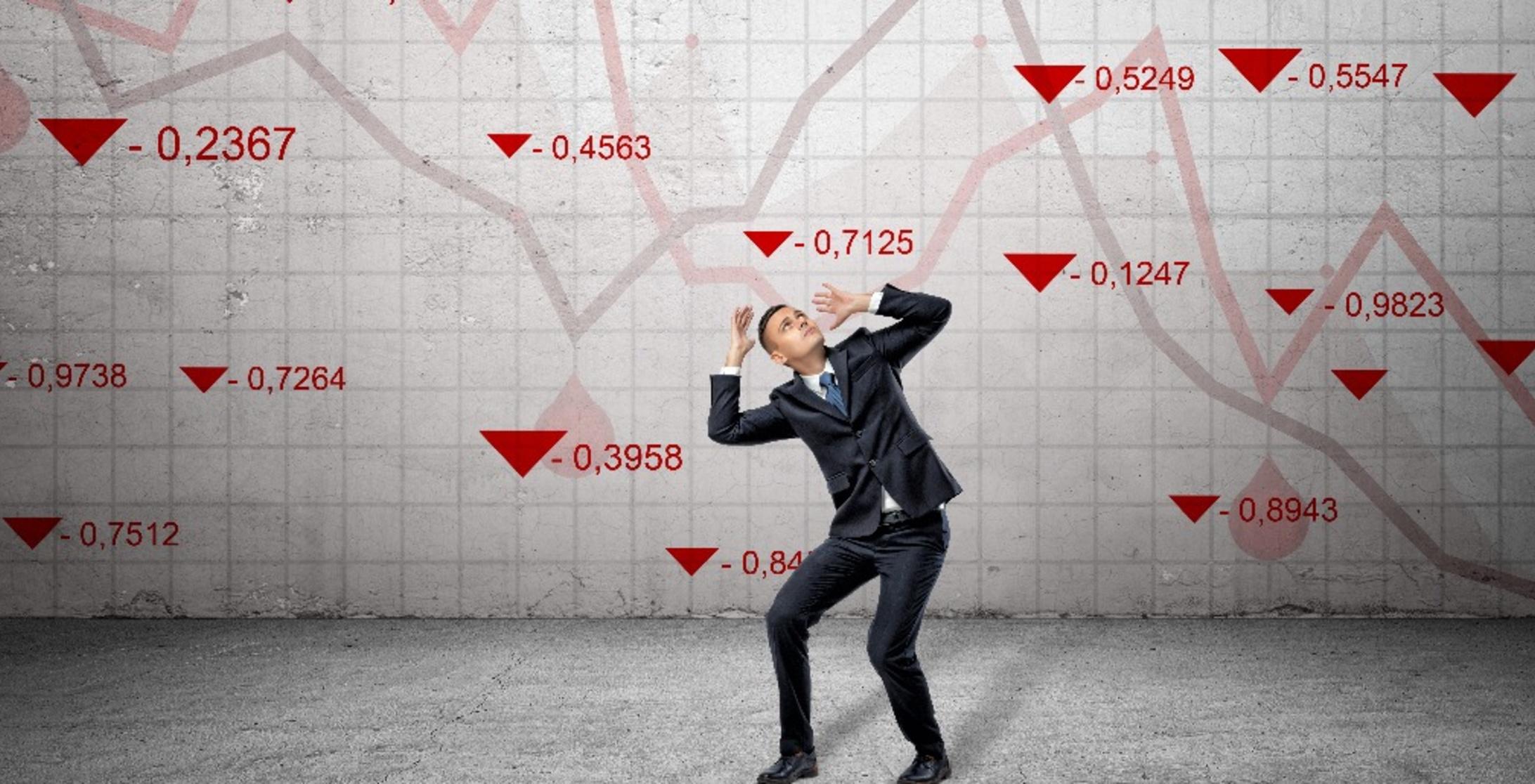
On November 16, 1864, the governor issued a warning to public officials not to join in the present madness. The formation of new firms took place, and new share offerings were announced in the press. Speculative buying were aided by forward contracts. When the civil war ended in May 1865, as a result, the market plummeted, leading cotton prices to plummet. Backbay reclamation’s stock plummeted 96% to under Rs. 2,000, and some merchants, notably Behramji Hormuzjee Cama, went bankrupt.
The crisis not only shattered many people’s financial gain, but it also resulted in a 21% drop in the city’s population owing to the closure of various businesses. When hundreds of “time bargains” (as future contracts used to termed in past) matured on July 1, 1865, both buyers and sellers defaulted, causing the bubble to collapse. In the aftermath of the crash, a share of Bank of Bombay that had reached Rs 2,850 at the zenith of the market had plummeted to just Rs 87.
2. 1982 Stock Market Crash
The Bengal bear cartel began short selling shares of Reliance Industries in 1982. Short selling was done on stocks worth roughly 110,0000 dollars. The value of the stock has dropped dramatically.The BSE was turned off for three days in a row.
3. 1991 Stock Market Crash
Following India’s economic liberalisation in 1991, the stock market experienced a series of booms and busts, some of which were linked to scams perpetrated by players like Harshad Mehta and Ketan Parekh, others to global events, and a few more to circular trading, price rigging, and irrational investor exuberance, which resulted in bubbles that eventually burst.
4. 1992 Stock Market Crash
The BSE fell 12.77 percent on April 28, 1992, as a result of the Harshad Mehta fraud.
Crash of 2004.
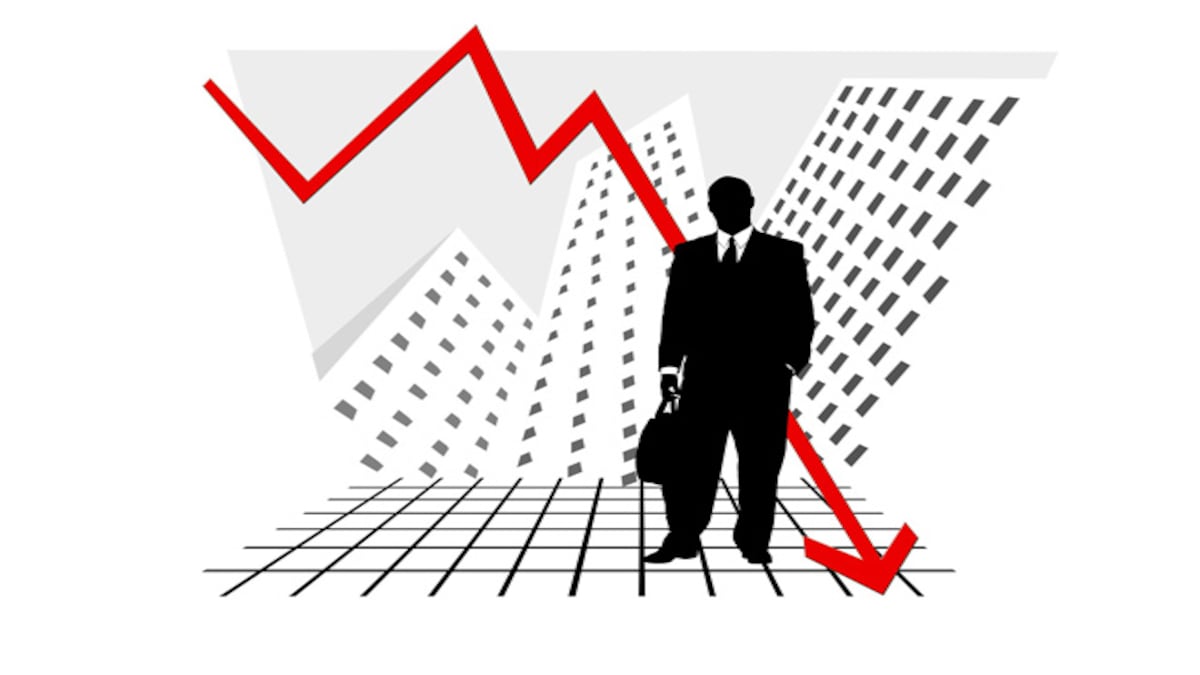
5. In 2004, the UPA had a one-seat majority in the House of Commons.
The BSE plummeted 15.52 percent on May 17, 2004, the greatest drop in its history (in terms of percentage).
6. The 2006 financial crisis
The BSE Sensex declined 826 points to 11,391 on May 18, 2006.
7. 2007’s disasters
The stock markets in India collapsed on more than one occasions in 2007 and 2008 during the financial crisis of 2007–2008. The stock markets dropped sharply five times in 2007.
2 April 2007: The Sensex plunged 617 points to 12,455, it fell much more during the day. “The Sensex began with a massive negative gap of 260 points at 12,812 following the Reserve Bank of India’s [Get Quote] decision to provide incentive to the cash reserve ratio and repo rate,” according to Rediff experts. The index fell to new downfall as a result of unrelenting selling, mostly in auto and financial business entitites.
The index hit a low of 12,426 before ending at 12,455 with a nifty loss of 617 points (4.7 percent).
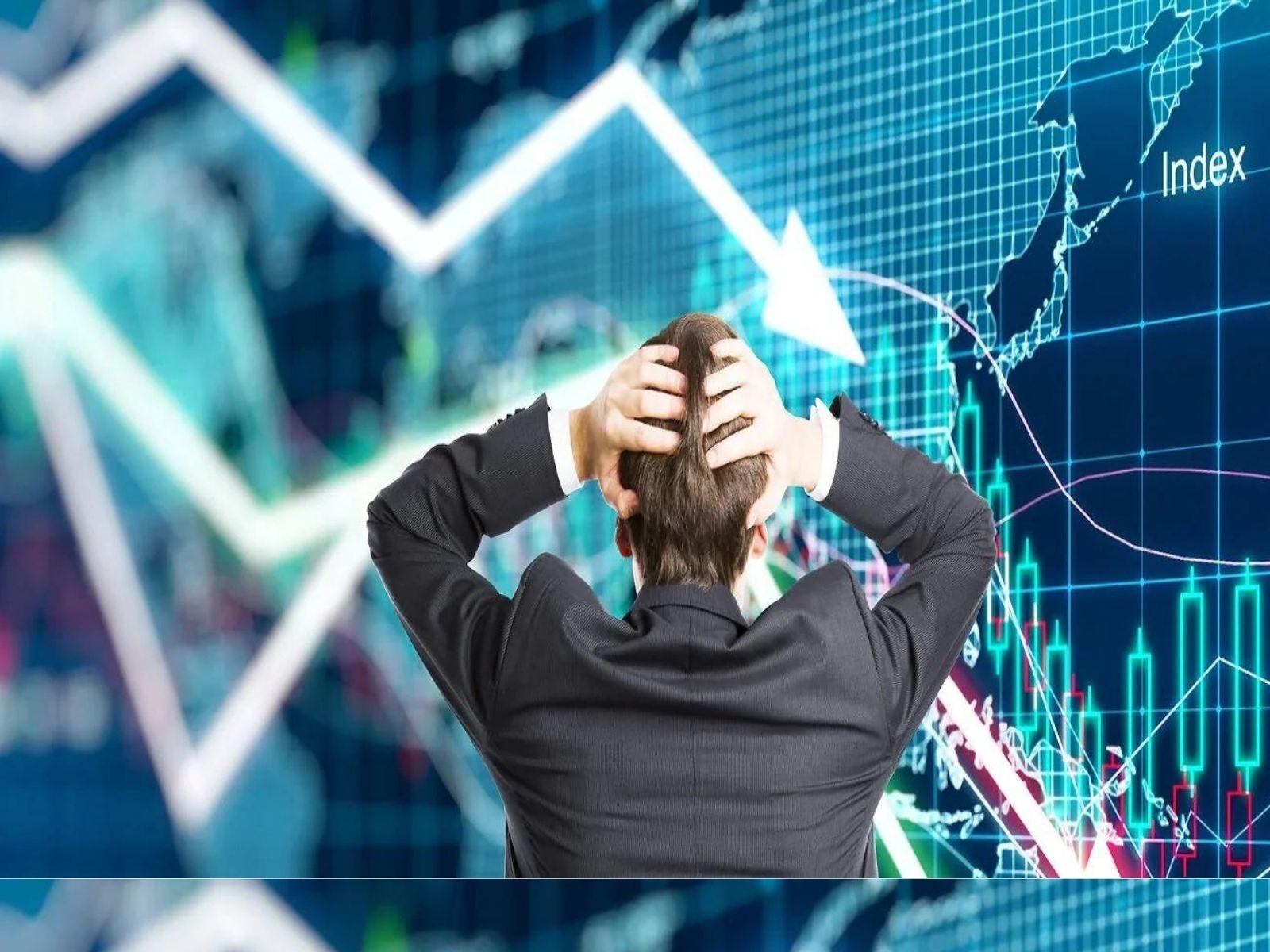
August 1, 2007: The Sensex dropped another 183 points to 14,936, while the Nifty dropped another 183 points to 4,346. “The Sensex began with a negative gap of 207 points at 15,344 amid dismal global market trends and slid deeper into the red,” according to Rediff. The index fell to a low of 14,911 due to unrelenting selling across the board. The Sensex closed the day with a little loss of 615 points, closing at 14,936. The Nifty concluded the day at 4,346, a loss of 183 points. This was the index’s third-largest loss in absolute terms (thus far)”.
16 August 2007: The Sensex remained 500 points down for the most of the trading session, subseqentally finishing at 14,358, a loss of 643 points.
18 October 2007: While trading was habitual for people in the morning, the Sensex plummeted in the as the sun rose volume of selling increased as the BSE’s closing bell approached. The Sensex plummeted to a low of 17,771 points, down 1,428 points from high of the previous day’s. With a loss of 717 points, it ultimately stabilised at 17,998. (3.8 percent ). The Nifty, too, dropped 208 points to 5,351.
“Mirroring weakness in other Asian markets, the Sensex experienced unrelenting selling,” Rediff said on November 21, 2007, in an attempt to explain the collapse.
The index hit a fresh low of 18,515 points, down 766 points from its predisclosed level. The market closed with a 678-point defeat, putting the score at 18,603. The Nifty dropped 220 points to 5,561 at the closing.
December 17th, 2007: According to Rediff, “The BSE Sensex fell to a low of 19,177, down 856 points from the day’s beginning, due to intense selling in late afternoon trades. The Sensex ended the day at 19,261 points, down 769 points (3.8 percent ). The NSE Nifty 50 concluded the day at 5,777, a 271-point loss
8. The 2008 Financial Crash
The BSE plummeted 1,408 points to 17,605 on January 21, 2008, resulting in one of the greatest losses in investor wealth. The BSE temporarily put a pause on trading at 2:30 p.m. owing to a technical issue, despite the fact that its circuit filter allows for up to 15% fluctuations before suspending trade for an hour.
The fall, dubbed “Black Monday” by the media, was attributed to a number of factors by analysts at HSBC mutual fund and JP Morgan, including a shift in the global investment climate, fears of a US recession, FIIs and foreign hedge funds selling to reallocate funds from risky emerging markets to safer developed markets, a cut in US interest rates, and global bourses.
Commonly referred to as event-related volatility, commodity market volatility, a combination of global and local factors (“…other emerging markets were down nearly 20%, so India is catching up…”), massive build-ups in derivatives positions leading to margin calls, and the fact that many IPOs had sucked liquidity from the primary market into the secondary market Experts at HSBC mutual funds anticipated that the stock market would continue to collapse, while JP Morgan analysts expected that the market would drop another 10-15 percent.
The Sensex plummeted by 875 points to 16,729. The next day, on January 22, 2008, the Sensex fell by 875 points to 16,729.
The Sensex touched a low of 15,332, down 2,273 points, on Tuesday, the most intra-day drop in its history.
However, it regained its losses and ended at 16,730, down 875 points. The Nifty ended the day at 4,899, down 310 points. The Bombay Stock Exchange halted trading for an hour as the benchmark Sensex fell to a low of 15,576.30 minutes after opening, breaching the 10% circuit restriction.
The Sensex dropped another 834 points to 16,630 on February 11, 2008.
The Sensex dropped 900 points to 16,677 on March 3, 2008.
The BSE Sensex dropped another 951 points to 14,809 on March 17, 2008.
The BSE Sensex plummeted to 8701 on October 24, 2008, a drop of 1070 points in a single day.
The Sensex continued to plummet on November 26, 2008, shattering “dashing middle class expectations,” according to the financial newspaper Livemint. The reasons for this, according to analysts at Livemint and Ajmera associates, Anagram capital, and Ace financial services, range from huge sales by foreign institutional investors (FII) to money withdrawal by the insurance industry. They all predicted that the Sensex will grow by 20-30% in 2009, from its current position of 9000 points.
9. The 2009 financial crisis
The Sensex lost 869 points to 14,043 on July 6, 2009.
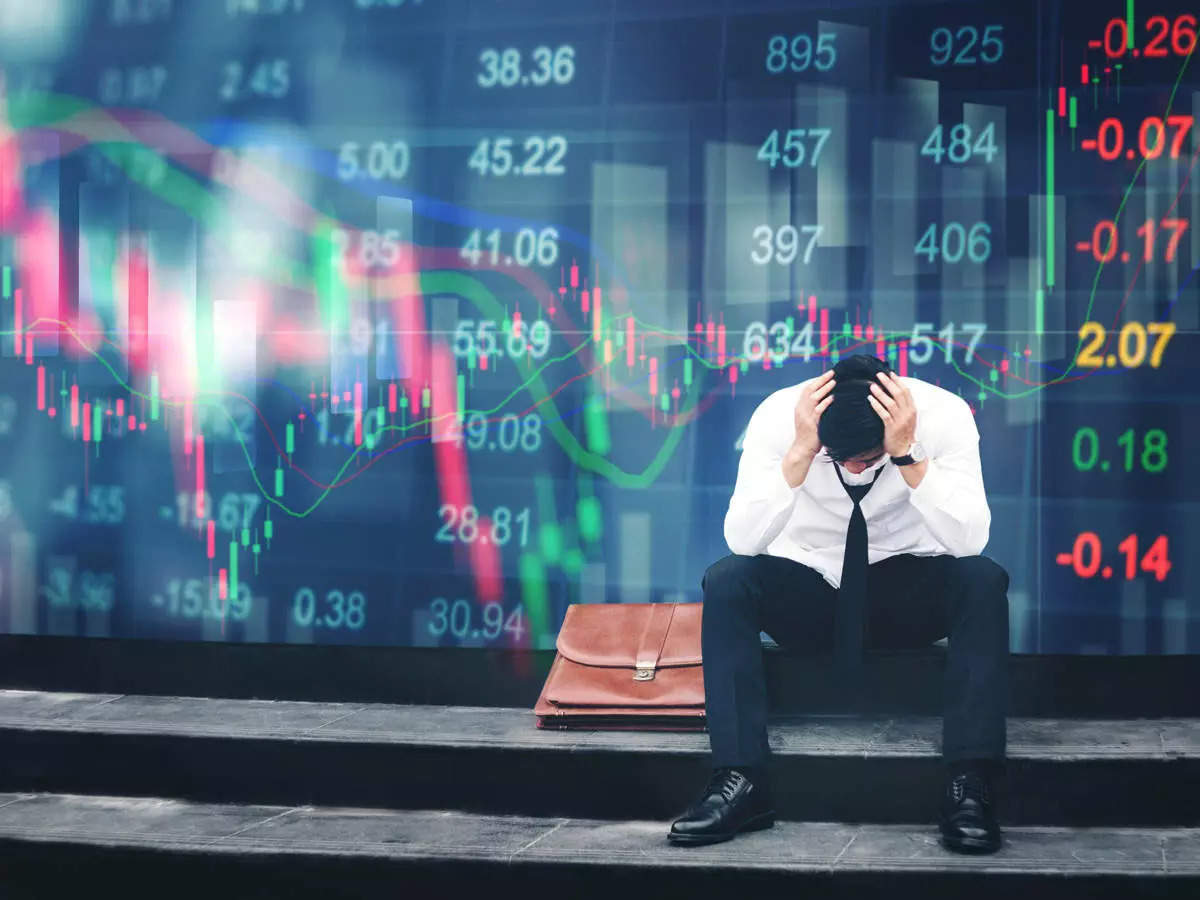
10. 2015’s disasters
The Sensex declined 854 points to 26,987 on January 6, 2015.
The BSE Sensex dropped 1,624 points and the NSE dropped 490 points on August 24, 2015. The indexes ended the day at 25,741 points, with the Nifty closing at 7,809 points. The cause of the crash was attributed to a ripple effect caused by worries of a Chinese slowdown, since the Yuan had been devalued two weeks prior, causing a drop in currency rates and quick selling of equities in China and India.
Shanghai’s stock exchange also dropped by 8.5 percent. Analysts cited a range of additional explanations for the drop, including weak first-quarter profits for several Indian businesses, grim management comments that cast doubt on their comeback, and more.
11. 2016’s disasters
In 2016, India’s stock markets continued to decline. By the 16th of February 2016, the BSE had dropped 26% in the previous eleven months, shedding 1607 points in four days in February. NPAs in Indian banks, “global deficiencies,” and “global issues” were cited as reasons. FIIs were reported to have sold shares worth Rs 17,318 crore in the four months from November 2015 to February 2016, as experts grew concerned about China’s economy and crude oil prices fell below $30 per barrel.
Analysts think the fall on November 9, 2016, was caused by the Indian government’s crackdown on dirty money, which resulted in frenetic trading.
The Sensex fell 6% to 26,902 points, while the Nifty fell 541 points to 8002. These were attributed to the Modi government’s demonetization campaign. The Hindu believed that the sinking rupee, as well as the US presidential election, had an impact on investor behaviour. Other Asian stock markets, such as the Hang Seng, Nikkei, and Shanghai Composite, also fell at the same time. The S&P 500 had also dropped 4.45%.
12. 2018’s crash
The BSE and NSE plunged substantially between February 2 and 5, 2018, while not being categorised as a crash, due to statements from the Finance Minister’s plan in the budget address to establish a 10% long-term capital gains tax (LTCG).
On the 5th, the BSE Sensex dropped 600 points in two days, while the Nifty 50 dropped 400 points to 10,676. The BSE Sensex had dropped 570 points to 35,328 on February 2nd, while the NSE Nifty had dropped 190 points to a low of 10,826.
13. 2020’s disasters
When the Union budget for FY 2020-21 was delivered in the lower house of the Indian parliament on February 1, 2020, the Nifty plunged by more than 3% (373.95 points), while the Sensex fell by more than 2%. (987.96 points). The worldwide collapse caused by the coronavirus epidemic focused in China also contributed to the decline.
The Sensex plunged 1448 points and the Nifty fell 432 points on February 28, 2020, as a result of rising global tensions caused by coronavirus, which the World Health Organization has indicated has pandemic potential.
Both the BSE and the NSE declined for the whole week, concluding with the biggest weekly drop since 2009.
Markets dropped by roughly 1000 points on March 4 and 6, wiping away many crores of value. Yes Bank was taken over by the RBI for rebuilding on March 6, 2020, and will be merged into SBI. This was done to safeguard the bank’s seamless operation, since it had been suffering for a few years to cope with tremendous strain owing to the cleansing of bad loans.
The Sensex dropped 1,941.67 points on March 9, 2020, while the Nifty-50 dropped 538 points. The dread of a COVID-19 epidemic has wreaked devastation throughout the world, including in India. Markets also plummeted as a result of the current Yes Bank issue.
The Sensex closed at 35,634.95 and the Nifty-50 at 10,451.45, both in the red.
The Sensex plunged by 2919.26 points (-8.18 percent) on March 12, 2020, the worst start to a week in history, while the Nifty-50 fell by 868.2 points (-8.30 percent) when the World Health Organization (WHO) declared the Coronavirus epidemic a “pandemic.”
The Sensex closed at 32778.14, a 33-month low.
The Sensex fell by 2,713.41 points (approximately 8%) on March 16, 2020, the second-worst drop in its history. The Nifty, on the other hand, fell below the 9200–mark, closing at 9,197.40, as a result of the worldwide economic downturn.
The Sensex, on the other hand, continued to plummet for four consecutive days till March 19, 2020, shedding 5815 points in the process.
As a result of coronavirus-related lockdowns across the world, the Sensex fell 3,934.72 points (13.15 percent) and the Nifty fell 1,135 points (12.98 percent) to 7610.25. This is the lowest it’s been since 2016. As a result of the rising number of coronavirus infections in India and across the world, it is experiencing its greatest weekly loss since October 2008.
Edited and published by Ashlyn Joy




